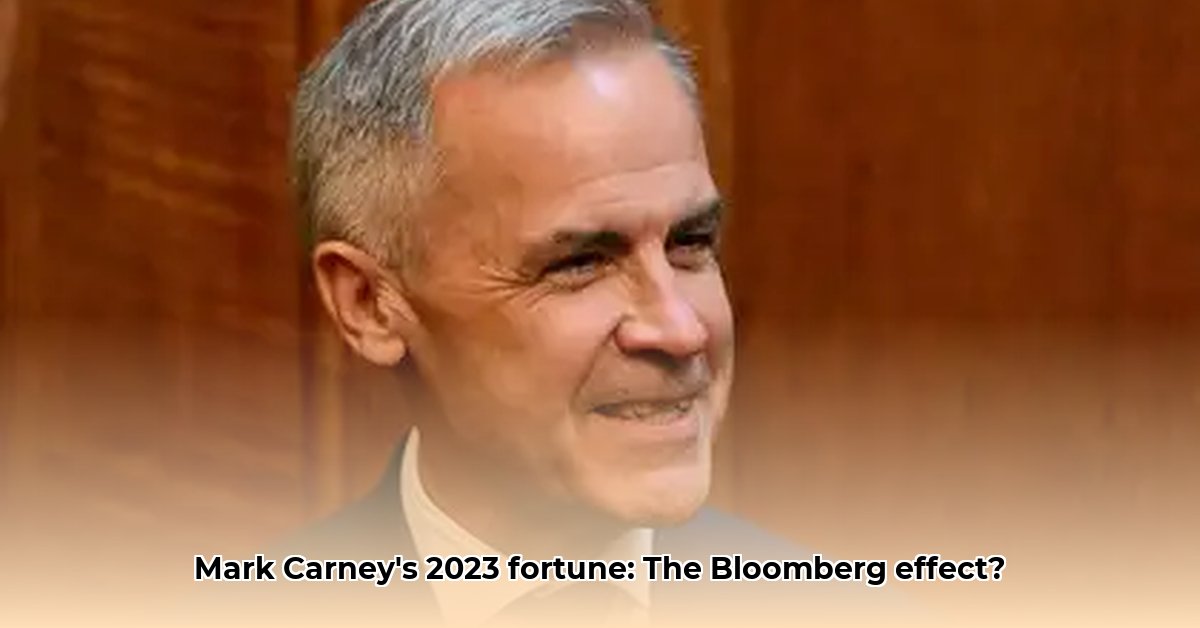
Mark Carney's Financial Landscape: A Complex Picture
Mark Carney's career trajectory—from leading the Bank of Canada and the Bank of England to his current role as chairman of Bloomberg—presents a complex financial picture. Determining his precise net worth in 2023 proves challenging due to the lack of publicly available comprehensive financial details. However, analyzing his career reveals significant insights into the interplay between public service, private sector success, and the accumulation of wealth. His compensation packages, bonuses, and lucrative private sector opportunities, likely influenced by his extensive network, all contribute to his substantial, albeit unquantified, wealth. How much is he worth? While the exact figure remains elusive, it's undeniable that he's among the world's most financially successful individuals. This isn't just about idle curiosity; understanding the scale of his wealth helps assess his influence and potential impact across various sectors. Isn't it crucial to understand the financial context surrounding such a powerful global figure? For more details on his wealth, see Carney's net worth.
How did his past roles shape his current wealth? His experience at the helm of powerful central banks provided both expertise and connections, opening doors to lucrative opportunities in the private sector. This transition from public service to private enterprise is a significant case study in itself, worthy of close examination. The connections and networks forged over decades at the top of the financial world serve as a springboard to a whole ecosystem of financial opportunities, extending beyond mere salary.
The Bloomberg Chairmanship: New Challenges and Ethical Considerations
Carney's appointment as Bloomberg's chairman is a significant event, underscoring his reputation and the trust placed in his leadership. Bloomberg's global reach and influence in finance naturally brings added scrutiny. His role at Bloomberg, in conjunction with his ongoing climate activism and involvement with Brookfield Asset Management, raises important questions about potential conflicts of interest. Could his Bloomberg position subtly influence his climate advocacy? Could his central banking experience unconsciously affect decisions at Bloomberg? These are legitimate concerns demanding transparent and rigorous ethical standards. Many experts emphasize the need for robust internal and external oversight to maintain confidence and prevent any perception of undue influence. The potential for conflict is real, and proactive mitigation is paramount.
Assessing Potential Conflicts and Mitigation Strategies
The potential for conflicts of interest stems from the overlap between Carney's roles at Bloomberg, Brookfield Asset Management, and his continued climate advocacy. To address these concerns, Carney has implemented a blind trust and ethics screens. However, the effectiveness of these measures is a subject of ongoing debate. Many argue that a blind trust, while providing some level of concealment, doesn't prevent potential conflicts, and the lack of transparency surrounding the trust and the ethics screens raises further concerns. How effective is a blind trust in eliminating even the perception of impropriety? The efficacy of these mitigation strategies, therefore, is questionable, leaving room for improvement in transparency and accountability. Does this approach adequately address the inherent complexities and eliminate potential for undue influence?
Key Risks and Mitigation Strategies
| Risk Category | Likelihood | Impact | Mitigation Strategy |
|---|---|---|---|
| Conflict of Interest | Medium | High | Enhanced transparency; robust ethical guidelines; independent oversight; regular audits. |
| Reputational Damage | Low | Medium | Proactive communication; open stakeholder engagement; rapid, decisive response to criticism. |
| Regulatory Scrutiny | Low | Medium | Strict compliance with regulations; robust internal compliance programs. |
| Strategic Misalignment | Low | Medium | Clear alignment between Bloomberg's strategy and Carney's expertise; open and frequent dialogue. |
The Path Forward: Transparency and Accountability
Increased transparency is crucial for navigating this complex landscape. Open communication and regular disclosure of financial holdings related to his various roles would help manage potential conflicts and build confidence. This proactive approach includes directly addressing concerns and questions to maintain trust. In the interconnected world of finance and politics, transparency and trust are not merely desirable but essential for maintaining integrity and accountability. Strengthening the existing legal and ethical frameworks for addressing conflicts of interest is also paramount. Public scrutiny and engagement remain vital for holding powerful figures accountable and ensuring that their actions serve the greater good. Only with greater transparency and stricter oversight measures can conflicts of interest be confidently mitigated.
The discussion surrounding Mark Carney's wealth and influence underscores the enduring need for close examination of the intersection of public service and private enterprise, particularly within the global financial system. The path forward demands a commitment to transparency, accountability, and a proactive approach to managing potential conflicts of interest.